1. Early Life and Career Beginnings
Joan Leslie's early life was marked by her family's musical talents and the economic challenges of the Great Depression, which led her into entertainment from a very young age. Her initial forays into Hollywood were filled with both opportunities and obstacles, as she navigated the industry while still a minor.
1.1. Childhood and Family Background
Joan Leslie was born Joan Agnes Theresa Sadie Brodel on January 26, 1925, in Highland Park, Michigan, as the youngest of three daughters. Her father worked as a bank clerk, and her mother was a pianist. Her two older sisters, Betty Brodel and Mary Brodel, shared their mother's musical interests, learning instruments like the saxophone and banjo early on and performing singing and dancing acts for audiences. Joan joined them at the remarkably young age of two and a half and quickly learned to play the accordion.
In the mid-1930s, the Great Depression caused significant financial difficulties for the family after her father lost his job. To support the family, the three sisters entered show business as vaudeville performers, touring extensively in Canada and the United States under the collective name "The Three Brodels." To bypass child labor laws, both Mary and Joan often misrepresented their ages; for instance, when Leslie was nine, she claimed to child labor investigators that she was 16 years old. Despite her young age, Joan proved to be a standout performer, captivating audiences with her impersonations of figures such as Katharine Hepburn, Maurice Chevalier, Jimmy Durante, Greta Garbo, Zasu Pitts, and Luise Rainer. Raised as a Roman Catholic with Irish ancestry, Leslie attended Catholic schools in Detroit, Toronto, and Montreal.
1.2. Entry into Hollywood
In 1936, at the age of 11, Leslie's talent performing in New York caught the attention of a talent scout from Metro-Goldwyn-Mayer (MGM). She was offered a six-month contract with the studio, earning 200 USD per week. While at MGM, she attended the studio's "Little Red Schoolhouse" alongside other child actors like Judy Garland, Mickey Rooney, and Freddie Bartholomew.
Her first film role was in the 1936 romantic drama Camille, starring Greta Garbo and Robert Taylor. Leslie played Taylor's younger sister, Marie Jeanette, but her speaking scenes were ultimately deleted, and she received no credit for her appearance. MGM struggled to find suitable roles for her, leading to her release from the studio along with Deanna Durbin. Leslie returned to New York, where she worked in radio and as a model. However, after her older sister Mary signed a contract with Universal Studios, Leslie returned to Hollywood with her family, working as a freelancer for various studios, primarily RKO Pictures.
During the filming of Men with Wings (1938), director William A. Wellman discovered that Leslie's mother had falsely stated her daughter's age, and that Joan was only 13 years old. Consequently, Wellman replaced her with her older sister Mary for the remainder of the production. Leslie received her first credited role in Winter Carnival (1939) as Betsy Phillips, chosen specifically for her southern accent. She was billed as Joan Brodel for this role. Later that year, she co-starred with Jimmy Lydon in Two Thoroughbreds, portraying the daughter of a horse owner. At the age of 15, Leslie was recognized by a group of Hollywood directors as one of 13 "baby stars of 1940". That same year, she appeared in the Warner Bros. short film, Alice in Movieland, which depicted a starlet's journey to establish herself in Hollywood. This film was one of the first directed by Jean Negulesco in Hollywood and was based on a story by Ed Sullivan.
2. Rise to Stardom and Major Works
Joan Leslie's career saw a significant ascent during her tenure at Warner Bros., where she secured iconic roles that cemented her status as a prominent Hollywood actress. Despite her success, her desire for more complex roles and her personal values eventually led to disputes with the studio.
2.1. Warner Bros. Era
Leslie's major breakthrough came in 1941 when she signed a contract with Warner Bros.. At the time, her acting name, Joan Brodel, was considered too similar to that of the established actress Joan Blondell, leading to her professional name being officially changed to Joan Leslie.
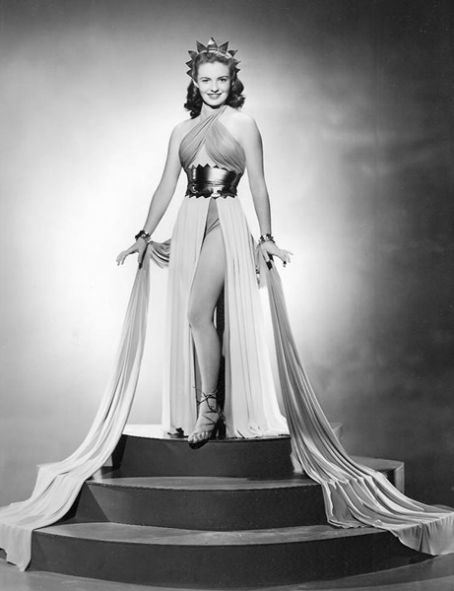
Just two weeks after signing, the then 15-year-old actress was asked to undergo a screen test without knowing the film's title. She secured the role by demonstrating her ability to cry on cue. The film was High Sierra (1941), a crime drama co-starring Ida Lupino and Humphrey Bogart, in which Leslie played Velma, a young woman with a disability. Film critic Bosley Crowther praised her performance, noting that she "handles lesser roles effectively."
Later that year, Warner Bros. produced a biopic of Alvin C. York, a highly decorated American World War I soldier, titled Sergeant York (1941), starring Gary Cooper. Although Jane Russell was initially considered for the role of Gracie Williams, York's fiancée, York specifically requested an actress who neither smoked nor drank, leading to the 16-year-old Leslie being cast. Sergeant York proved to be a massive critical and financial success, becoming the highest-grossing film of 1941 and earning 11 Oscar nominations, including a Best Actor win for Cooper. Leslie later humorously recounted the significant age difference between herself and Cooper (who was 24 years her senior), noting, "Gary gave me a doll on the set. That's how he saw me."
Leslie also played a supporting role in The Male Animal (1942), where she portrayed Patricia Stanley, the younger sister of a character played by Olivia de Havilland. This role had previously been played by Gene Tierney in the original Broadway production.
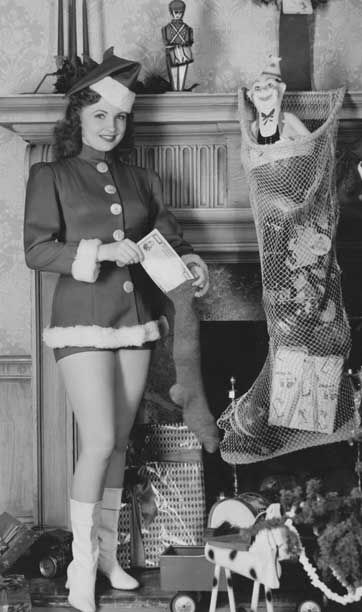
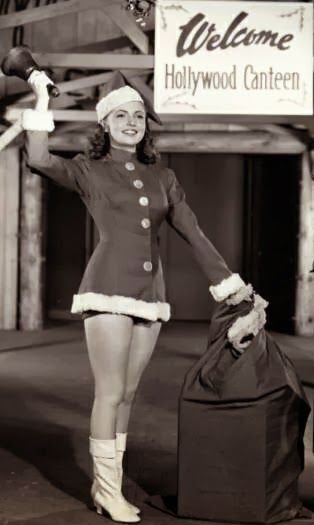
In 1942, Leslie auditioned for Paramount's Holiday Inn, but Warner Bros. decided to cast her opposite James Cagney in Yankee Doodle Dandy, a musical depicting the life of Broadway entertainer George M. Cohan. Leslie portrayed Mary, Cohan's wife and an aspiring singer. The film garnered eight Oscar nominations, with James Cagney winning the Best Actor award. By this point, Leslie had achieved star status, and her on-screen persona was widely described as embodying "sweet innocence without seeming too sugary."
In 1943, Leslie appeared in four motion pictures. The first was The Hard Way, co-starring Ida Lupino and Dennis Morgan, with a The New York Times reviewer commending Leslie as "just as deft and versatile a lady as the character she is supposed to be."
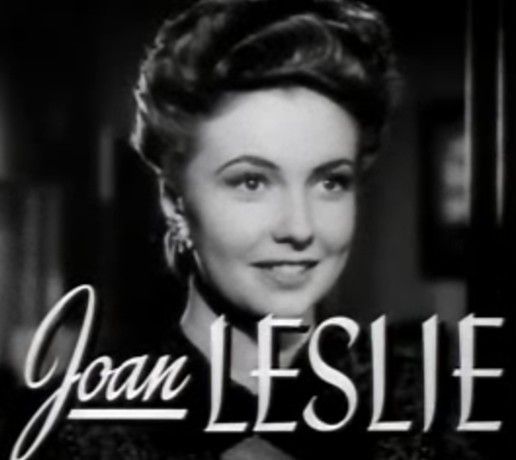
For her second film, she was lent to RKO for The Sky's the Limit, where she starred alongside Fred Astaire. In this film, Leslie's character introduced the iconic Harold Arlen-Johnny Mercer song "My Shining Hour".
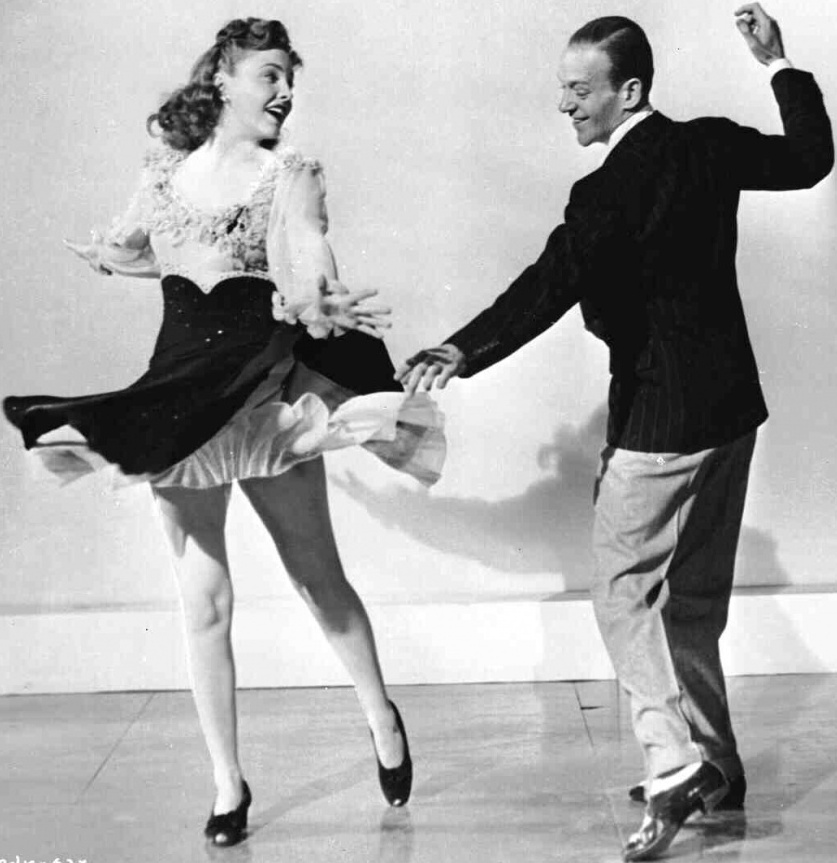
Her third movie was the wartime production This Is the Army, in which she co-starred with Ronald Reagan.
Her fourth film of the year was Thank Your Lucky Stars. She was also considered for the role of Tessa in The Constant Nymph (1943), opposite Errol Flynn, but studio executive Jack L. Warner deemed her unsuitable, and the part ultimately went to Joan Fontaine.
During World War II, Leslie was a dedicated volunteer at the Hollywood Canteen, where she frequently danced with servicemen and signed numerous autographs. She appeared as herself in the Warner Bros. film Hollywood Canteen (1944), alongside Robert Hutton and many other Hollywood stars. The fictionalized plot of the film depicted her falling in love with a soldier. Her sister, Betty Brodel, also made a brief appearance as herself in the film. By 1946, an exhibitors' poll conducted by Motion Picture Herald recognized Leslie as the most promising star of tomorrow.
2.2. Contract Disputes and Independent Career
By 1946, Joan Leslie grew increasingly dissatisfied with the limited types of roles offered to her by Warner Bros. She desired to expand beyond her ingenue image, seeking more serious and mature parts. Her decision was also heavily influenced by her strong moral and religious convictions, as she was a devout Catholic. With the assistance of her lawyer, Oscar Cummings, she initiated a legal battle to be released from her contract with Warner Bros.
In 1947, the Catholic Theater Guild recognized Leslie with an award for her "consistent refusal to use her talents and art in film productions of objectionable character," underscoring her commitment to her principles. In response to her legal actions and principled stands, studio executive Jack L. Warner reportedly used his considerable influence to blacklist her from other major Hollywood studios, severely impacting her career prospects in the mainstream industry.
Undeterred, Leslie signed a two-picture contract in 1947 with Eagle-Lion Films, a smaller studio known as a "poverty row" outfit. Her first film with them was Repeat Performance (1947), a film noir in which she portrayed a Broadway actress. She then appeared in Northwest Stampede (1948) alongside James Craig. After her contract with Eagle-Lion Films concluded, she was cast in The Skipper Surprised His Wife (1950), co-starring with Robert Walker. This film was distributed by MGM, the very studio where she had begun her film career in 1936.
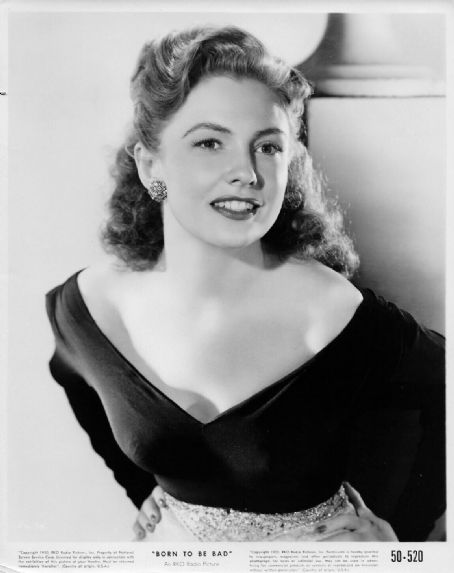
In the early 1950s, Leslie made a conscious decision to prioritize raising her daughters, which led to a more irregular and selective film career. In 1952, she signed a short-term agreement with Republic Pictures, a low-budget studio primarily known for producing Westerns. One notable film she made for Republic was Flight Nurse (1953), where she portrayed Polly Davis, a character inspired by the career of Lillian Kinkella Keil, a highly successful flight nurse in the Air Force. The film was praised by the Kingsport Times-News as a thrilling tribute that "honors the courageous women who performed miracles of mercy above the clouds in evacuation of wounded GIs from Korean battlefields." Her final feature film appearance was in The Revolt of Mamie Stover (1956), though she continued to make sporadic appearances in television shows while her children were attending school.
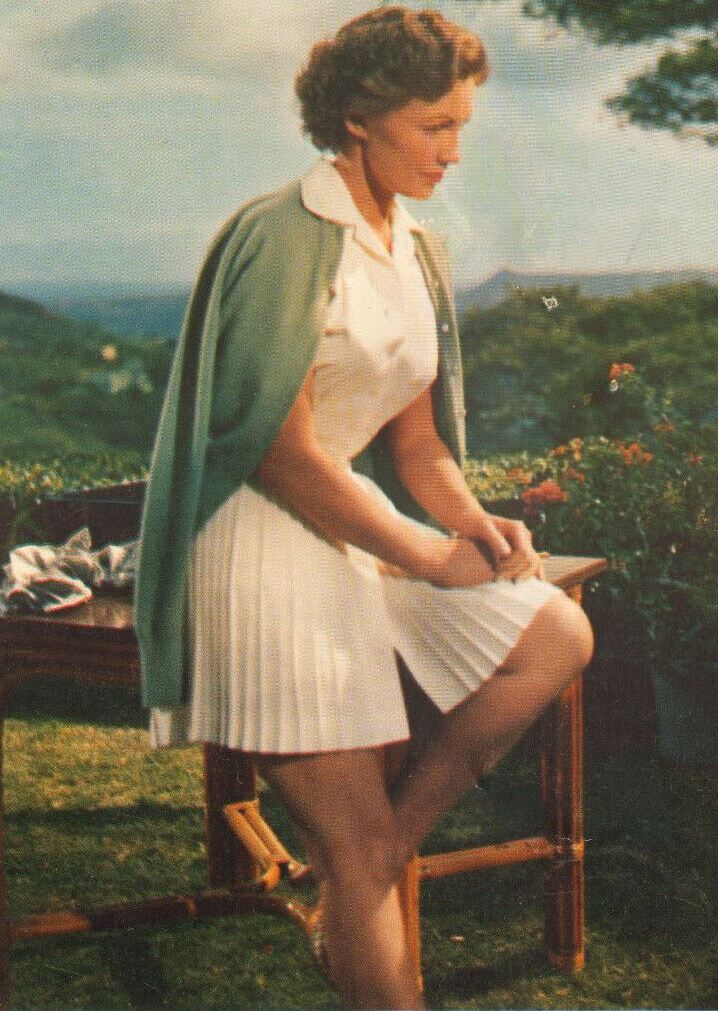
3. Post-Warner Years and Personal Life
After her main Hollywood career, Joan Leslie transitioned to focusing on her personal life, particularly her family, while also dedicating significant time to her philanthropic and social endeavors.
3.1. Marriage and Family
In March 1950, Joan Leslie married William Caldwell, a respected obstetrician. They had identical twin daughters, Patrice and Ellen, who both later became teachers. Leslie's marriage and the birth of her daughters profoundly influenced her acting career, leading her to prioritize her family and consequently reduce her professional commitments, resulting in a more irregular film schedule in the early 1950s.
3.2. Philanthropy and Social Engagement
Leslie was a devout Roman Catholic and deeply committed to charity work. She dedicated over 50 years to St. Anne's Maternity Home, a testament to her long-term dedication to social causes. Politically, she was a Democrat and actively supported Adlai Stevenson II during the 1952 United States presidential election.
Beyond her direct charity involvement, Leslie also made significant contributions in other ways. She designed clothing under her eponymous brand. Following the passing of her husband, William Caldwell, in 2000, Leslie established the Dr. William G. and Joan L. Caldwell Chair in Gynecologic Oncology for the University of Louisville in 2001, demonstrating her enduring commitment to healthcare and education. She had been an adopted alumna of the university for over 32 years prior to this significant endowment.
3.3. Retirement from Acting
Joan Leslie gradually scaled back her acting commitments in the 1950s after her marriage and the birth of her children. While The Revolt of Mamie Stover (1956) marked her last feature film, she continued to make occasional appearances in television shows during her daughters' school years. She officially retired from acting in 1991, following her appearance in the television film Fire in the Dark.
4. Death
Joan Leslie died on October 12, 2015, in Los Angeles, California, at the age of 90. She was interred at Holy Cross Cemetery.
5. Legacy and Recognition
Joan Leslie's career left a lasting mark on Hollywood, earning her several significant accolades and recognition for her contributions to film and television.
5.1. Awards and Honors
- On October 8, 1960, Joan Leslie was honored with a star on the Hollywood Walk of Fame at 1560 Vine Street, recognizing her contributions to the entertainment industry.
- In 1999, the American Film Institute nominated her as one of 250 actresses for their selection of the "25 greatest female screen legends" who debuted before 1950, acknowledging her significant impact on cinema.
- On August 12, 2006, she received a Golden Boot Award for her notable contributions to Western television shows and movies, further cementing her place in the genre's history.
6. Filmography
6.1. Film
| Year | Title | Role | Studio | Notes |
|---|---|---|---|---|
| 1936 | Signing Off | Joan Brodel | Short film, as one of "The Brodel Sisters" | |
| Camille | Marie Jeanette | MGM | Uncredited | |
| 1938 | Men with Wings | Patricia Falconer at age 11 | Paramount | Uncredited. Role shared with sister, Mary, who replaced her due to age misrepresentation. |
| 1939 | Nancy Drew... Reporter | Mayme, journalist student | Warner Bros. | Uncredited |
| Love Affair | Autograph seeker | RKO | Uncredited | |
| Winter Carnival | Betsy Phillips | Walter Wanger Productions | As Joan Brodel | |
| Two Thoroughbreds | Wendy Conway | RKO | As Joan Brodel | |
| 1940 | Laddie | Shelley Stanton | RKO | As Joan Brodel |
| High School | Patsy | 20th Century Fox | Uncredited | |
| Young as You Feel | Girl | 20th Century Fox | As Joan Brodel | |
| Alice in Movieland | Alice Purdee | Warner Bros. | Short film | |
| Star Dust | College girl | 20th Century Fox | Uncredited | |
| Susan and God | Party Guest | MGM | Uncredited | |
| Military Academy | Marjorie Blake | Columbia | As Joan Brodel | |
| Foreign Correspondent | Johnny Jones' Sister | Walter Wanger Productions | Uncredited | |
| 1941 | High Sierra | Velma | Warner Bros. | |
| The Great Mr. Nobody | Mary Clover | Warner Bros. | ||
| The Wagons Roll at Night | Mary Coster | Warner Bros. | ||
| Thieves Fall Out | Mary Matthews | Warner Bros. | ||
| Sergeant York | Gracie Williams | Warner Bros. | ||
| Nine Lives Are Not Enough | Newspaper receptionist | Warner Bros. | Uncredited | |
| 1942 | The Male Animal | Patricia Stanley | Warner Bros. | |
| Yankee Doodle Dandy | Mary Cohan | Warner Bros. | ||
| 1943 | The Hard Way | Katie Blaine | Warner Bros. | |
| The Sky's the Limit | Joan Manion | RKO | ||
| This Is the Army | Eileen Dibble | Warner Bros. | ||
| Thank Your Lucky Stars | Pat Dixon | Warner Bros. | ||
| 1944 | Hollywood Canteen | Herself | Warner Bros. | |
| I Am an American | Herself | Warner Bros. | Short film, Uncredited | |
| 1945 | Where Do We Go from Here? | Sally Smith / Prudence / Katrina | 20th Century Fox | |
| Rhapsody in Blue | Julie Adams | Warner Bros. | ||
| Too Young to Know | Sally Sawyer | Warner Bros. | ||
| 1946 | Cinderella Jones | Judy Jones | Warner Bros. | |
| Janie Gets Married | Janie Conway | Warner Bros. | ||
| Two Guys from Milwaukee | Connie Reed | Warner Bros. | ||
| 1947 | Repeat Performance | Sheila Page | Eagle-Lion | |
| 1948 | Northwest Stampede | Christine "Honey" Johnson | Eagle-Lion | |
| 1950 | The Skipper Surprised His Wife | Daphne Lattimer | MGM | |
| Born to Be Bad | Donna Foster | RKO | ||
| 1951 | Man in the Saddle | Laurie Bidwell Isham | Columbia | |
| 1952 | Hellgate | Ellen Hanley | Commander Films | |
| Toughest Man in Arizona | Mary Kimber | Republic | ||
| 1953 | Woman They Almost Lynched | Sally Maris | Republic | |
| Flight Nurse | Lt. Polly Davis | Republic | ||
| 1954 | Jubilee Trail | Garnet Hale | Republic | |
| Hell's Outpost | Sarah Moffit | Republic | ||
| 1956 | The Revolt of Mamie Stover | Annalee Johnson | 20th Century Fox |
6.2. Television
| Year | Title | Role | Notes |
|---|---|---|---|
| 1951 | Family Theater | Claudia Procles | Episode: "Hill Number One: A Story of Faith and Inspiration" |
| 1951 | The Bigelow Theatre | Episode: "Flowers for John" | |
| 1951-52 | Fireside Theater | Ilse | Episodes: "Black Savannah", "The Imposter" |
| 1952 | Schlitz Playhouse of Stars | Episode: "The Von Linden File" | |
| 1953 | Summer Theater | Ada Jordan | Episode: "Dream Job" |
| 1953-54 | Ford Theatre | Marie Pasquin/Susan Farrington | Episodes: "The Old Man's Bride", "Wonderful Day for a Wedding", "Girl in Flight" |
| 1954 | Lux Video Theatre | Vanessa Cook | Episode: "Pick of the Litter" |
| 1955 | Studio 57 | Jane Merlin | Episode: "Vacation with Pay" |
| 1956 | The 20th Century Fox Hour | Peg | Episode: "Smoke Jumpers" |
| 1956 | Chevron Hall of Stars | Episode: "Conflict" | |
| 1958 | The Christophers | Episode: "Find the Good Within You" | |
| 1959 | General Electric Theater | Sarah Owens | Episode: "The Day of the Hanging" |
| 1965 | Branded | Emily Cooper | Episode: "Leap Upon Mountains" |
| 1975 | Police Story | Mary Devereux | Episode: "Headhunter" |
| 1976 | The Keegans | Mary Keegan | TV movie |
| 1978 | Charlie's Angels | Catherine Calhoun | Episode: "The Jade Trap" |
| 1979 | The Incredible Hulk | Lily Beaumont | Episode: "My Favourite Magician" |
| 1983 | Simon & Simon | Toni Meyers | Episode: "Shadow of Sam Penny" |
| 1983 | Shadow of Sam Penny | ||
| 1986 | Charley Hannah | Sandy Hannah | TV movie |
| 1988 | Murder, She Wrote | Lillian Appletree | Episode: "Mr. Pennroy's Vacation" |
| 1989 | Turn Back the Clock | Party Guest | TV movie |
| 1991 | Fire in the Dark | Ruthie | TV movie, (final acting role) |
6.3. Radio
| Year | Program | Episode/source |
|---|---|---|
| 1942 | Screen Guild Players | Yankee Doodle Dandy |